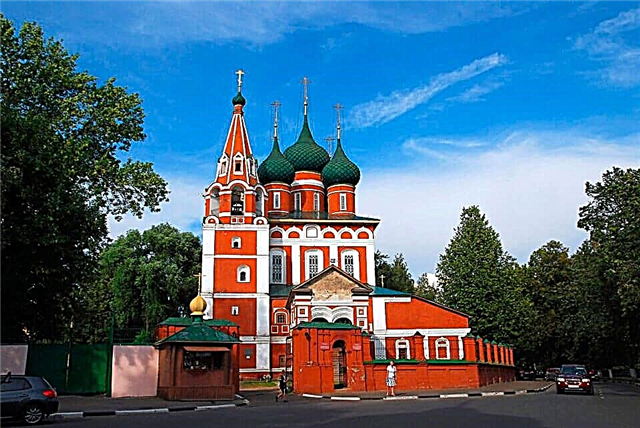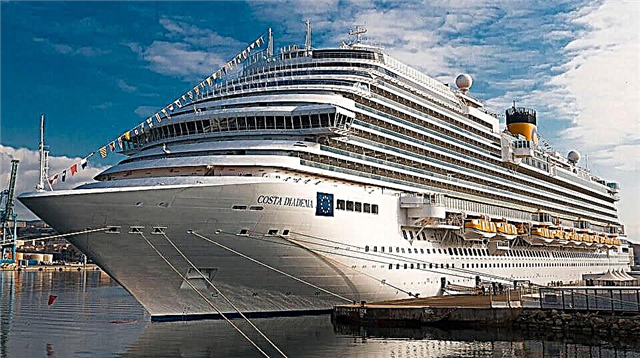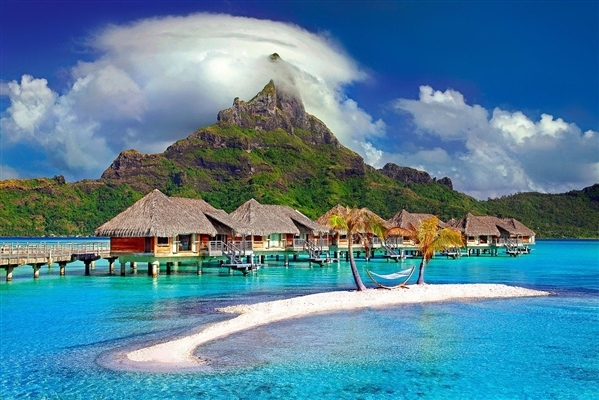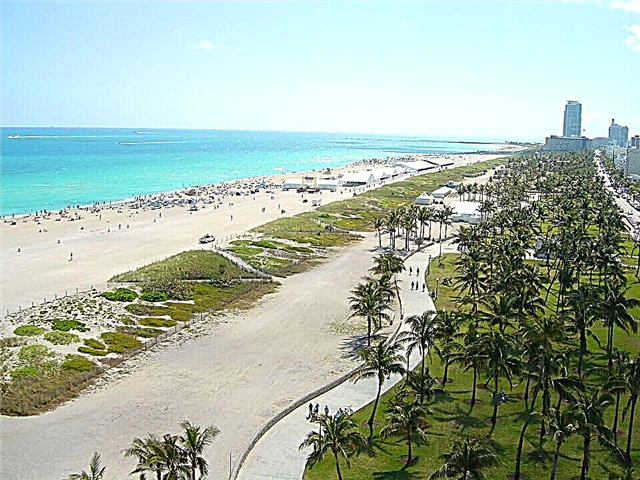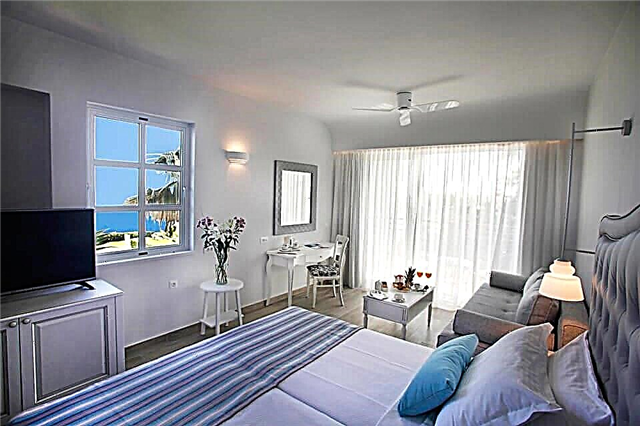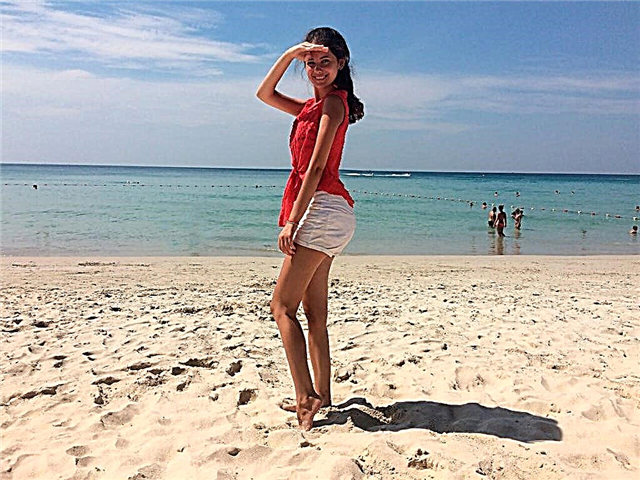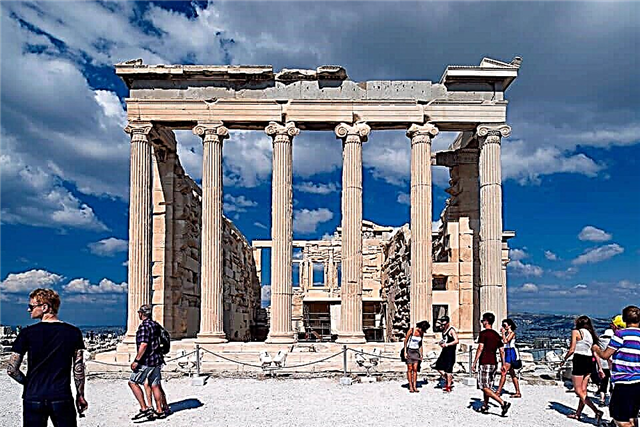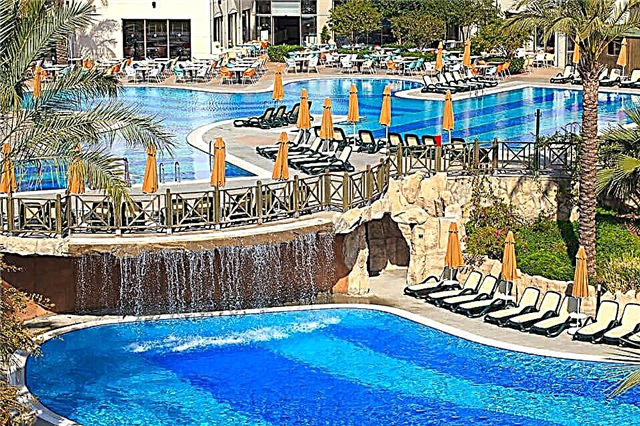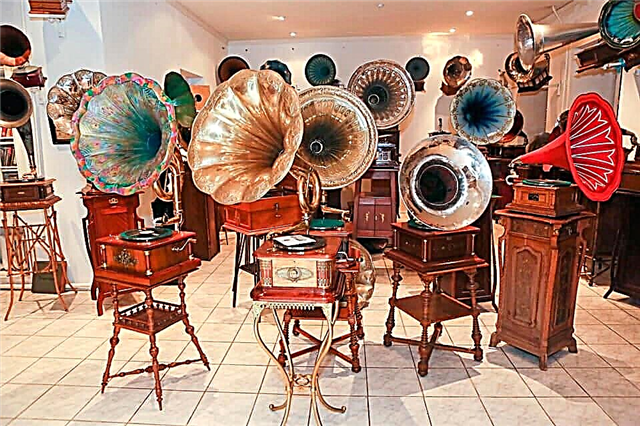This city is multifaceted, majestic and beautiful. The sights of St. Petersburg are, of course, an integral part of it. However, looking at them, one can only admire. But in order to learn about the history, traditions, culture and life of the northern capital, it is best to go to one of the many museums. So, we offer a list of the most interesting museums in St. Petersburg.
Cabinet of curiosities or Cabinet of rarities

The Kunstkamera is one of the most popular museums in St. Petersburg. Its history began during the reign of Peter I, when the emperor, having “spied” the idea in Europe, decided to collect rare and unusual exhibits. This was the beginning of the legendary "collection of freaks", which today is considered one of the largest in the world.
Of course, this is not a sight for the faint of heart, especially a showcase dealing with human anomalies. Still, interest usually wins over disgust. In addition to tourists, the exhibits of the Kunstkamera are of interest to medical students studying malformations. Over time, the topic has expanded significantly.
Today, most of its exposition is devoted not so much to unusual plants, animals and human embryos, but to ethnographic features of the most diverse peoples of the world. It presents objects related to their culture and life.
Of course, this part is not as famous and popular as the one devoted to anomalies, but no less exciting. It is interesting that the Kunstkamera has been associated for more than one hundred years not only with an interesting exhibition, but also with the building in which it is located.
It was picked up personally by Peter I, when one of the rooms in the Winter Courtyard, set aside for storing the collection, was clearly insufficient. Address - house 3 on the University embankment. Open from 11-00 to 18-00 (in summer until 19-00), any day except Tuesday.
We recommend reading what to see in St. Petersburg:
Museum of the History of St. Petersburg

The best place to learn about the history of the city, to experience all its ups and downs, joys and misfortunes. And there were a lot of them, for a seemingly not too long time (if we compare, for example, with Moscow). The main exposition is located in the Peter and Paul Fortress. Here you can visit the Commandant's House, where the guides are happy to talk about the period of the founding of St. Petersburg and its life up to 1918.
The acquaintance continues in the Peter and Paul Cathedral and the Trubetskoy bastion, which has received the sad fame of a political prison. The territory of the Fortress is open to the public every day, from 09-00 to 20-00. You do not need to pay to enter. But in order to visit each of the museums, you will have to purchase separate entrance tickets.
In addition to the main exposition, there are several branches: the museum-apartment of S.M. Kirov, where you can learn about the life of the city in the pre-war Soviet era, the Rumyantsev mansion, the exposition of which is dedicated to the 900-day blockade, the museum-apartment of A.A. Blok, the House of Press, as well as the museum of the St. Petersburg avant-garde.
How to get to each of these branches, as well as their opening hours and the cost of visiting, can be found on the official website.
Peter-Pavel's Fortress

The same age as St. Petersburg, the legendary Peter and Paul Fortress was founded in the spring of 1703 by order of Peter I on a deserted island at the very mouth of the Neva. The main architect of the project was Domenico Trezzini.
Created as a defensive fortification, the fortress was never used for its intended purpose, but for many years it became a place of imprisonment of state criminals. Today the Peter and Paul Fortress is recognized as an object of cultural heritage of the peoples of the Russian Federation in the status of federal significance.
This huge architectural and historical complex is part of the St. Petersburg State Museum of History and has dozens of exhibition halls and countless exhibits.
The employees of the complex conduct thematic excursions for visitors dedicated to the history of the fortress, archaeological artifacts, sightseeing of the main architectural sights - the Peter and Paul Cathedral, the Tsar's Rooms, the Trubetskoy Bastion Prison, the Grand Ducal Burial Vault and others.
The complex is located on Zayachy Island at the address Peter and Paul Fortress, 3. The territory of the island is open to the public from 6 am to 9 pm, and you can go to the Peter and Paul Fortress from half past ten in the morning until eight in the evening.
The closure of the territory takes place at 21 o'clock. Wednesday is the only day off.
Hermitage

The Hermitage, one of the largest museums in our country, is associated with the Winter Palace, Imperial Russia and long queues for tickets. Which, in general, is not surprising. After all, almost every guest of the Northern capital strives to visit it.
By the way, in fact, the museum is much more than it might seem at first glance. It occupies not only the Winter Palace, but also 5 other historical buildings. True, guests often do not reach them.
Translated from French “hermitage” means “a place where you can retire”. This is what Catherine II called the apartment, where she placed a collection of 220 paintings acquired in Europe. It was with this collection that the museum began.
Already in 1852, back in tsarist Russia, it became available to everyone. Today, the Hermitage collection contains more than 3 million exhibits, many of which can rightfully be considered world masterpieces. For example, Benois Madonna Leonardo da Vinci or Raphael's Holy Family. The list can be continued for quite a long time.
In addition to the art collection, although it is the main one, you can look at the imperial interiors, archaeological finds or a numismatic exhibition. In general, everyone will surely find something interesting for themselves.
The main branch of the Hermitage, the Winter Palace, is located on Palace Square. You can visit it from Tuesday to Sunday from 10-00 to 18-00 (on Sunday - until 17-30).
Botanical Museum. V.L. Komarova

Everyone has probably heard about botanical gardens at least once in his life - there are enough of them in our country. But the Botanical Museum is the only one and it is located in St. Petersburg. Its expositions are collections of plants that have been collected by famous scientists-travelers for more than a dozen years.
N.M. Przhevalsky, V.L. Komarov and many others. Today, all exhibits are divided into 4 groups, each of which is presented in a separate room: global vegetation, an exhibition dedicated to the evolution of the plant world, flora of Russia, plants and humans.
However, one should not think that these are only boring herbariums and excursions, reminiscent of academic lectures. In the last century, beautiful greenhouses were built here, in which exotic tropical plants are still grown. What could be better than a walk among the palm trees on a sunny winter day (or any other)?
Guests can also take a walk in the arboretum park, covering an area of 16 hectares, where plants are planted that can withstand the cold weather of St. Petersburg - European, North American and Asian species. It is located at Professor Popov Street, building 2. You can visit it on Wednesdays, Saturdays and Sundays from 11-00 to 17-00.
Palace of the Counts Sheremetev

Everyone who has opened a textbook on Russian history at least once in his life knows about the Sheremetev family. Its representatives made a significant contribution to the development of our country and, not surprisingly, were repeatedly noted by the emperors for their services.
A plot of land on the Fontanka embankment was granted to Field Marshal B.P. Sheremetev by Peter I. Soon, the construction of the palace began under the leadership of the Russian architect S. Chevansky.Experts still claim that he worked not according to his own drawings, but according to those made by Rastrelli.
However, this fact has not been proven. For a long 150 years, the palace was home to the count's family. You can endlessly talk about famous guests who have been here. A.S. Pushkin was also a friend of the family and often dropped in for tea. After the revolution, the palace turned into a museum.
The collection exhibited there was very diverse, since it was based on the personal collections of the Sheremetev family. Much later, in 1990, an important event for the art world took place - the building was completely given over to the music museum. It is he who is located within its walls to this day. I must say that the collection of instruments presented here is unique and is considered the largest in our country.
The Sheremetev Palace is located on the Fontanka embankment, at 34. You can visit it on any day except Tuesday, Wednesday from 13-00 to 21-00, the rest of the time from 11-00 to 19-00.
Summer house of Peter I

The Summer House of Peter I on the Petrogradskaya Side is the only building that has survived in the city since its foundation. True, initially it looked somewhat different and resembled an ordinary Russian hut. Later, when the tsar visited Holland and was carried away by everything connected with it, a European roof appeared, and the walls were painted red in the manner of brick.
Peter lived here for 5 years, overseeing the construction of the fortress and even directing it personally. Later, stone palaces appeared on the other bank of the Neva, and the summer residence ceased to be royal chambers. Which, in general, is not surprising.
After all, it is unlikely that Peter, whose height was 2.04 meters, felt comfortable in rooms with ceilings only 1 cm higher. Although, he never chased after amenities, and his summer house, which does not at all look like a palace, proves this once again.
Today, the former residence houses a museum, where you can see the personal belongings of the king, as well as documents related to the Great Northern War. The “pearl” of the collection is a pear chair, which Peter made with his own hands many years ago (at least that's what the guides say).
The summer house of Peter the Great is located on Petrovskaya embankment, in house no. 6. You can visit it from Wednesday to Monday from 10-00 to 18-00 (on Thursday, the work schedule is somewhat different, from 13-00 to 21-00).
Elagin Palace
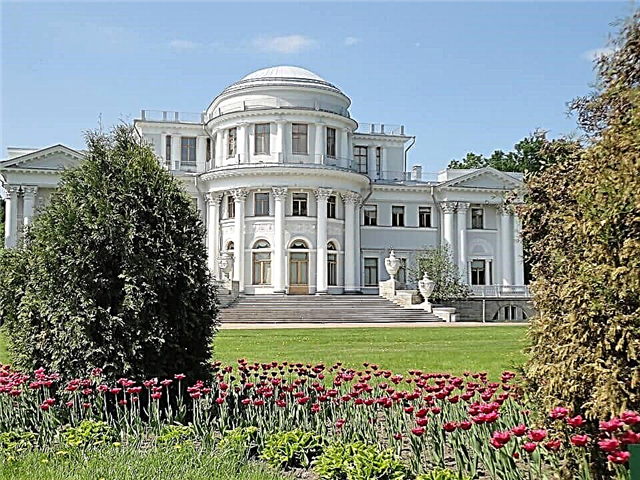
Far from the central part of the city, in a quiet and very beautiful place, there is a beautiful palace, which was named Elagin. It was built in the 19th century as a summer residence for the widowed Maria Feodorovna, wife of Paul I. The empress was already quite old and could not cope with the road to Gatchina, where the whole family spent the warm season. After her death, the palace practically did not live, and immediately after the revolution it became a museum.
Fortunately, the interiors were very well preserved, and the empress managed to “get hold of” a lot of personal belongings. Unfortunately, during the Great Patriotic War, only ruins remained from the palace. There was a long debate about the expediency of restoration, in the end it was decided that the game was worth the candle. The work was carried out for no less than 8 years!
Today, here you can get acquainted with the life of the imperial family, as well as, as if in a time machine, travel back to the distant 19th century and become a participant in a costume ball. An outfit for this can be rented, but you need to sign up for an event in advance. Moreover, such holidays are held not so often.
A tour of the palace can be combined with a pleasant walk along Elagin Island - this place is very attractive, ideal for taking a break from the urban bustle. The Elagin Palace is located on the island of the same name (the Black River metro area). Its doors are open from Tuesday to Sunday from 10-00 to 18-30 (on Wednesdays from 13-00 to 21-00).
Faberge Museum

Founded in 2013 by Russian entrepreneur Vekselberg, the Faberge Museum consists of eleven luxurious halls, the most famous of which are the Golden Lounge, the Knights' Hall, the Beige Hall, the Gothic Hall, the Red Lounge and others.
It has an invaluable collection of Russian jewelry art and a unique collection of arts and crafts of various genres and trends. The list of the most valuable exhibits includes nine imperial Easter eggs, created under the name of Carl Faberge.
It is located in the Naryshkin-Shuvalov palace on the embankment of the Fontanka River at house number 21. It is open daily from 10:00 to 20:45. The only day off is Friday. The ticket office sells tickets from 9:30 to 20:15.
Cruiser Aurora

Probably, there is no inhabitant in the Northern Capital who, at least once in his life, would not think about what the legendary cruiser dreams of at the hour when the sun rises over the Neva. Tourists often have no time to be distracted by lyrics - after all, the list of attractions that you need to see and museums that must be visited is very large.
And, of course, one of the first places in it is occupied by the legendary Cruiser Aurora. This is one of the first warships in Russia, which, after completing its service for the good of the Motherland, became a museum.
And he had to prove himself twice - during the Russo-Japanese and the First World War. In addition, the cruiser played its role in the course of the October Revolution - after all, it was from this ship that a blank shot was fired, after which the assault on the Winter Palace began.
Today tourists can go up to the deck, walk around the cabins, visit some of the service rooms. Of course, not all of them, as some of them are still considered secret. It is not so easy to do it yourself - the number of visitors is limited, priority is given to organized groups.
However, even those who did not have a chance to go up on deck, can appreciate the power and greatness of the legendary Aurora, looking at her from the shore. The cruiser is located on the Petrovskaya embankment. Its doors are open from 10-30 to 16-00 on any day except Monday and Friday.
Mint

The mint appeared shortly after the city became the capital of the Russian Empire. After all, this betrayed him a certain status and added significance not only in the eyes of the country's population, but also on the world stage. Since the time when Peter I issued a decree in 1724 that “a gold coin should be minted in the Peter and Paul Fortress”, practically nothing has changed.
Is that the metal for making money began to be used differently. Of course, the mint went through different periods. In the 19th century, it was considered out of date, yielding to its European comrade in all respects, but the modernization and purchase of new equipment quickly solved the problems.
In Soviet times, it changed its name from St. Petersburg to Leningradsky. During the Great Patriotic War, he was completely evacuated outside the city. However, all this time brand new coins were issued from his machines, which quickly “scattered” throughout the country. Time dictates its terms.
Nowadays, the range of products produced by the mint has slightly expanded. Today, in addition to money, medals, tokens are made here, as well as in a separate workshop there is a small jewelry production that offers customers products according to ready-made samples or individual orders.
The Mint is located on the territory of the Peter and Paul Fortress. You can visit the exposition working with it on your own or as part of an excursion group, from 10-00 to 20-00.
Museum of microminiature "Russian Lefty"

The masters of their craft, who, like the once legendary Lefty, are able to shoe a flea and even perform much more delicate work, have not been extinct even today in Russia. You can verify this by visiting the Microminiature Museum, which presents the works of Vladimir Aniskin.
This exposition received the status of a museum not so long ago, in 2006. For a long time it was just a permanent exhibition.And, despite the fact that the space was once an office space, it has managed to create a special atmosphere that tunes visitors to the desired mood.
As for the works themselves, there are 40 of them. It took quite a long time to create each masterpiece - from 3 weeks to half a year. Naturally, all the details can be seen only under a microscope. The master himself works with this device.
Many people are interested in the question - what are such small, but graceful micro-figures made of? From the dust of platinum, gold and other precious and non-precious metals. But, in any case, their value is not determined in any way in grams.
Each of the works presented at the exhibition is a masterpiece, unique in design, idea and technique. It is almost impossible to repeat it - the scale is too small to be able to make a copy. It is located at 35 Italianskaya Street. You can visit it any day from 11-00 to 19-30 (in the summer months - until 20-00).
Museum of Russian TV Series

The United Russian Film Studios film company presents everyone with a unique chance to visit the world of Russian TV series. To do this, you do not need to go to the film sets, it is enough to look into the museum. Caring guides are happy to acquaint guests with the cinema world, the equipment used on the set, and also talk about the process of making films.
But still, most of the exhibits are not equipment and devices, but props that were used to create a particular film. It is not surprising that new halls are constantly appearing in the exposition, because the horse industry never ceases to delight the audience with new multi-part novelties. A pleasant bonus is the opportunity to visit the shooting pavilion, where the chromakey is located. It was thanks to him that Harry Potter was able to fly, and the Hulk - mercilessly smash everything around.
In general, the world of special effects is a separate topic, which the museum is also happy to talk about. And, of course, they show. Within a few hours, guests are completely immersed in the world of cinema. One gets the impression that it was possible to visit not on an excursion, but on the most real filming.
Moreover, not one series, but many at once. Located at 9 General Khruleva Street, in the building of the United Russian Film Studios (near the Pionerskaya metro station).
You can visit it only by appointment at serialmuseum.ru, guided tours are held on Saturdays.
Grand Model Russia

Open to all comers, "Grand Model Russia" is a unique national show project that clearly demonstrates the power and capabilities of engineering. The building where the "Grand Model" is located was built after the end of the Second World War and was part of the complex of buildings of the Asbestos Technical Products plant. The complex was founded here in 2008, and since then the amazing details of its construction have become available to everyone who is not indifferent to the most ambitious layout in Russia.
It presents information-cognitive and historical-geographical data about Russia. For students, "live lessons" are held on professions, Russian landmarks and the history of the development of engineering.
The Grand Model, located at 16 Tsvetochnaya Street, is open from ten in the morning to eight in the evening, seven days a week, ticket offices close at 19:15. Video and photography on the territory of the complex is free.
State Russian Museum

Located in the historical center of St. Petersburg, it is considered one of the largest and most important museums of Russian art. This unique artistic and architectural complex owes its origin to Alexander III, who made the decision to establish a museum of Russian fine arts. The date of creation is considered to be 1895, when Nicholas II ordered the establishment of the Russian Museum of Emperor Alexander III. It received its first visitors in the spring of 1898.
Today, its collection includes up to 400,000 exhibits of various genres and trends of Russian art from the 10th to the 21st centuries, and the total area exceeds 30 hectares. The complex also includes the scientific library created in 1897, the fund of which today is 170 thousand titles.
The Russian Museum, located at 4, Inzhenernaya Street, is open to visitors every day, except Tuesday, from 10 am to 6 pm. Tickets can be purchased until half past five in the evening. The working hours of the Benois building and the Mikhailovsky Palace are from 10 to 20 hours.
Central Naval Museum

This oldest museum complex in Russia has its origins in the St. Petersburg Model Chamber, where the drawings and models of the Baltic Fleet of the early 18th century were kept. Today the TsVMM is considered the largest naval museum in the world. Many departments have been created here, covering areas such as scientific expositions, funds, scientific acquisition, scientific education, restoration work. The complex also includes a military scientific library.
TsVMM is located at Bolshaya Morskaya Street, 69A, not far from the Admiralteyskaya metro station.
You can visit it on any day, except Monday and Tuesday, from eleven in the morning until six in the evening. The ticket office is open until 5.15 pm.
Military-Historical Museum of Artillery, Engineering Troops and Signal Corps

Its history dates back to August 29, 1703 - the date of the founding of the Zeichhaus in the Peter and Paul Fortress, where, according to the instructions of Peter I, war trophies and samples of artillery pieces were to be kept.
Today, it houses the world's largest collection of unique exhibits dedicated to the history and development of Russian military affairs: weapons and equipment, uniforms and ammunition, samples of military art and communications, archival documentation and awards.
To get to the museum, located in St. Petersburg at Aleksandrovsky Park, 7, visitors should be guided by the Gorkovskaya metro station. The entrance for visitors is possible from 11 to 18 hours, and a ticket can be purchased until five in the evening. The days when the museum does not accept visitors are Monday, Tuesday, and also Thursday at the end of each month.
The scientific library, which is part of the complex, is open from 11 am to 5 pm on Tuesdays and Thursdays. The archive is open every Wednesday and Friday, from 10 am to 4:30 pm.
Anna Akhmatova Museum at the Fountain House

The Anna Akhmatova Memorial Fund was founded in St. Petersburg in 1989 and is dedicated to the 100th anniversary of the poet's birth. The initiator of the creation was the Executive Committee of the Leningrad City Council and the Culture Fund. It includes Akhmatova's memorial apartment with preserved interiors, Gumilyov's museum-apartment and Brodsky's American study. Literary evenings, exhibitions and performances are often held here, guided tours of the permanent exhibitions are organized.
The memorial house of Akhmatova is located at Liteiny Prospect, 53. On Wednesday, the exposition is open from noon to 20:00, on other days - from half past ten in the morning until 18:00. Monday is the day off.
The entrance ticket is estimated at 120 rubles (adults) and 60 rubles (schoolchildren and pensioners). Free admission for guests under 7, students, disabled people, veterans and museum staff.
Zoo museum

This interesting popular science complex owes its appearance to the zoological collections of the Kuntskamera, where the exhibits brought by Peter the Great from a Dutch trip were kept.
The founding date is 1832. Gradually expanding, the base of natural science exhibits reached 30 thousand units and became one of the largest in the world.
There are expositions of tropical birds, molluscs, corals, marsupial mammals, vertebrates, the "mammoth" hall and much more. It is located on the Universitetskaya embankment in the building number 1 and is open every day, except Tuesday, from 11 am to 6 pm.
The sanitary day is the second Wednesday of the month.The ticket office serves tourists until 16:50.
Erarta Museum of Contemporary Art

It positions itself as the most ambitious project popularizing contemporary art. A fundamentally new look at creativity and innovative presentation of material are the main features of Erarta. According to experts, this is the largest non-commercial exhibition of contemporary art in the Russian Federation, in the arsenal of which there are almost 3 thousand works of several hundred Russian authors.
Special attention is paid to temporary exhibitions, the number of which has already exceeded four dozen. The key topics of such projects are not only art in its modern manifestation, but also fashion, as well as achievements in the field of design. It is located on Vasilievsky Island, line 29, in house number 2. It works from 10 am to 10 pm on any day of the week, except Tuesday.
State Museum of the History of Religion

Created in 1930 on the initiative of the famous scientist-historian Bogoraz-Tan, this museum was a symbiosis of exhibits from the Kunstkamera, the Hermitage, the Russian Museum and the Library of the Academy of Sciences.
Its current potential includes a huge number of exhibits dedicated to ancient beliefs and rituals, religions of the Ancient World and the East, the emergence and development of all major religions of the world. The most interesting collections of open storage are presented in three collections - Japanese, Masonic and the collection of Western European painting.
Being an important location in the list of the most interesting scientific and educational objects of St. Petersburg, the GMIR is located at 14/5 Pochtamtskaya Street. Permanent exhibitions are open to the public on any day (except Wednesday) from 10 am to 6 pm, while temporary exhibitions are open from 10 am to 5:30 pm. Museum ticket office - until 17:00. On Tuesdays, it starts its work at 1 p.m. and ends at 9 p.m., the ticket office is open one hour less.
Museum of Soviet slot machines

This historical and interactive site is unique, first of all, for its spectacularity and the ability to combine a fascinating excursion with playing slot machines from the past. It was founded in April 2007 and since then has collected more than fifty slot machines under its roof, released since the mid-1970s on the territory of the USSR.
Visitors will find "Sea Battle" and "Horse Racing", "Towns" and "Tankodrome", "Duplet" and "Fighters", as well as many other games. To create even greater surroundings, coin changers, an "Assistant", a soda water machine and other rarities from the Soviet era have been installed.
This unusual place is located in St. Petersburg at Konyushennaya Square, 2B in a building erected in the 18th century. Visitors can go on a guided tour every day from eleven in the morning to eight in the evening.
Museum of the Russian Academy of Arts

The large-scale, diverse and invaluable in its cultural significance museum of the Russian Academy of Arts, which arose in the middle of the 18th century, offers its visitors countless exhibits of various genres and types, including painting, sculpture, architecture, graphics. In addition to the main location, the institution has several branches, including the museum-apartments of Kuindzhi, Brodsky, Chistyakov and Repin.
The main building is located at 17, University Embankment. Opening hours: Saturdays, Sundays, Wednesdays and Fridays, from eleven to nineteen hours, on Thursdays from noon to eight in the evening. Museum ticket offices close one hour earlier.
Museum of the Political History of Russia

Located in the old mansion of Kshesinskaya and Brant in the very center of St. Petersburg, this complex houses almost half a million exhibits relating to Russian political history from the era of Catherine II to the present day. The goal of the IPRM leadership is to preserve historical artifacts and nurture the political culture of our society.
The main building is the repository of the main exhibits and the venue for temporary exhibitions. It is located on Kuibyshev Street, 2-4. You can visit here on any day except Thursday, from 10 am to 6 pm (on Wednesdays and Fridays - until 8 pm). The working day at the box office is one hour shorter. The last Monday of each month is considered a sanitary day.
Museum complex "Universe of Water"

This multimedia exposition is housed in a former reservoir, which is part of the Main Waterworks complex. Its founders see their main task as a clear and comprehensive demonstration of the importance of water both in the life of an individual person and for the planet as a whole.
As a branch of the Information and Educational Center of the St. Petersburg Vodokanal, the Universe of Water offers its guests three expositions, including historical ("The World of St. Petersburg Water") and multimedia ("The Underground World of St. Petersburg" and "The Universe of Water").
All three expositions are located at Shpalernaya street, 56. The days off are Monday-Tuesday. On other days, the work schedule is set from 10 to 19 hours.
Stroganov Palace

Previously owned by influential Petersburgers, today the Stroganov Palace is part of the Russian Museum. The building, built between 1752 and 1754, is a typical example of Russian baroque.
Its author was Francesco Rastrelli. The Stroganov Palace regularly hosts exhibitions of arts and crafts, painting, and old photographs. Among the permanent exhibitions, a special place is occupied by the Mineralogical Cabinet.
The palace, located at 17 Nevsky Prospekt, is open for visits every day, except Tuesdays. On Thursdays it is open from 1 pm to 9 pm, on other days from 10 to 18 hours. You can get a ticket in time no later than half an hour before the palace closes.
A.S. Popov Central Museum of Communications

The most interesting expositions and exhibitions of this complex exhaustively reveal the history of communication means. Telephone, postal, telegraph, radio communications - this and many other things will become known to visitors after a tour of the numerous halls and atriums.
The staff of the complex has developed many thematic programs, including for children, as well as intriguing quests and informative lectures.
The CMS named after Popov is located on Konstantinovsky Prospekt at 11a, lit. "IN". Visitors are expected here every day from half past ten to eighteen hours, with the exception of Monday (day off). The cash desk closes an hour earlier.
Russian Ethnographic Museum

A unique ethnographic complex that stores historical and cultural exhibits is part of a single architectural ensemble of the Russian Museum. The REM collections contain information about everyday life, religion and holidays of the peoples of Russia and a number of other countries.
You can see the unique expositions of the SEM at the address: Petersburg, Engineering Street, 4/1 every day, except Mondays. On Tuesday REM is open from 10 am to 9 pm, on Sunday - from 11 am to 7 pm, on other days - from 10 am to 6 pm. Every last Friday of the month there is a cleaning day.
Museum-apartment of A.A. Blok

As a branch of the Museum of the History of St. Petersburg, Blok's Museum-Apartment was opened in 1980 in the house where the poet lived for the last nine years of his life until August 1921. The first part of the complex is itself a memorial apartment, where the exact furnishings and all the home furnishings have been recreated. The second part is a literary exposition, from which you can glean a lot of information about the life and work of Blok.
To visit this complex, you must go to 57 Dekabristov Street in St. Petersburg on any day except Wednesday. Opening hours - from 11 am to 6 pm (closes an hour earlier on Tuesdays).
House-Museum of F.I. Shalyapin

This museum is considered a very popular object on the tourist map of St. Petersburg.It is located on Aptekarsky Island in the house where Chaliapin lived from 1915 to 1922. before his emigration from Russia.
The opening, dating back to 1975, was timed to coincide with the 125th anniversary of the birth of the famous performer. Today, walking through the rooms of the house-museum, everyone can see the hallway, bedroom, dining room, living rooms and even the dressing room of the great artist. It also contains a huge collection of photographs, posters, letters and drawings by Chaliapin.
Located on Graftio Street, 2B. It is open to visitors on Wednesdays from 1 pm to 9 pm, and from Thursday to Sunday from 11 am to 7 pm. The ticket office is open one hour less. Every month on the last Friday the house-museum is closed for a cleaning day.
Preschoolers, as well as visitors with St. Petersburg Card, will be able to visit here for free.
Museum-model "Petrovskaya Aquatoria"

The unique historical model "Petrovskaya Aquatoria" is a new word in the development of the Russian museum business. Made on a scale of 1:87, the model of old St. Petersburg covers an area of 500 square meters. Here are presented city sights in miniature, as well as extensive archival materials and even a real water space, on which models of ships of the Peter's era float.
Other interactive objects are also interesting - carriages, human figures, as well as light and sound effects accompanying the reconstruction. Petrovskaya Aquatoria awaits its visitors every day from ten in the morning to ten in the evening on the 6th floor of the Admiral shopping and entertainment complex at 4/1 Malaya Matrosskaya street Tickets can be purchased at the box office until nine o'clock in the evening.
The boring museum of records and facts "Titicaca"

What do a man and a banana have in common? What did a medieval lie detector look like? What flowers smell like meat? Answers to these and thousands of other questions can be obtained in the unique Titicaca Museum, which contains dozens of outlandish exhibits from all over the world. Shocking facts, surprising discoveries and amusing records are presented in the 800 square meters of the Titicaca exhibition.
It is located on Kazanskaya Street in house 7. Opening hours - from 10 am to 9 pm daily (ticket offices close an hour earlier).
Planetarium

With the beginning of the space age, humanity's interest in the mysteries of the universe increased day by day. Opened in 1959, the St. Petersburg Planetarium has always been popular with residents and visitors. Today it is one of the three largest planetariums in our country.
In fact, this is a real scientific and educational center with an excellent lecture hall and a solid set of excursion programs. On the basis of the planetarium, located in Aleksandrovsky Park, 4, there are seven halls, where the most interesting exhibits on astronomy, physics, cosmonautics, natural history and geography are presented.
Each program is available to visitors in accordance with the planetarium schedule.
Museum of dolls

A place where fairy tales come to life - this is how the St. Petersburg Museum of Puppets, founded in 1999 under the auspices of the Russian Ethnographic Museum, positions itself. In a cozy, kind atmosphere, fabulous events, presentations, and children's performances are often held.
And in 12 halls of the puppet "kingdom" you can see collections of interior, theatrical, folklore and even frivolous (18+) dolls. The exhibition space is complemented by the Forest Kingdom, Pride and Glory of the Fatherland halls, demonstration workshops and other expositions.
Located on Vasilievsky Island at number 8 on Kamskaya Street.
Museum of gramophones and phonographs V.I. Deryabkina

The creator of this project was Vladimir Deryabkin, a famous artist, trainer and clown. In 1998 he founded a cultural center, where he presented his collection of gramophones, gramophones and other musical instruments.
The exhibits also include documentary evidence of the history of the appearance of the first gramophone, rare records, an old barrel organ. There are also personal relics in the collection - musical devices by Shalyapin, Stanislavsky, Ershov, Plevitskaya and other famous personalities.
You can view the atmospheric exposition daily from 10 am to 7 pm at the address: Kamennoostrovsiky prospect, 32. Excursions are conducted by prior arrangement.
Museum "LabyrinthUm"

Innovation center for entertaining sciences - this is how its creators call "LabyrinthUM". Using modern interactive technologies, the center promotes the principle that science can and should be interesting for both children and adults. Over 170 exhibits are presented in a special interactive space that reveals the laws of physics, biology and chemistry to visitors.
Each experimental setup is accompanied by detailed instructions, so that anyone can personally participate in carrying out this or that experiment. In addition to excursions, "LabyrinthUm" offers its guests interesting educational and entertainment programs and quests, offsite events and much more.
LabyrinthUma sites are located at 9A Tolstoy Street, Tolstoy Square MFC (from eleven to nineteen o'clock) and at 14 Kosmonavtov Avenue, Peter Raduga shopping and entertainment center (from ten to twenty o'clock).
Russian Museum of the Arctic and Antarctic

The idea of creating a popular science center popularizing the development of the Antarctic and the Arctic arose among the scientific community back in the 1920s, but the museum itself was opened on a permanent basis in early 1937. Nowadays RMAiA offers three large-scale expositions - "Antarctica", "Nature of the Arctic" and "History of the development of the northern sea route".
It is located on Marata Street, 24 "a" in St. Petersburg. From Tuesday to Sunday, it is open from 10 am to 6 pm, the cash desk closes half an hour earlier. Monday in RMAiA is a day off. Every last Friday in February, May, August and November, a cleaning day is organized here.
Museum and Exhibition Center "Rosfoto"

This is a large St. Petersburg photographic site, where all kinds of exhibitions and screenings are regularly held, as well as excursions to permanent exhibitions are organized. A sightseeing tour, an inspection of House 35 on Bolshaya Morskaya Street with visits to current exhibitions, as well as various thematic programs, taking into account the age and interests of visitors, are very popular. At the request of the guests, the center can organize excursions in a foreign language.
IEC Rosfoto, located at 35 Bolshaya Morskaya Street, is open every day. Mondays, Wednesdays, Fridays and Sundays - from eleven in the morning to seven in the evening, on other days - from noon to nine in the evening. You need to have time to buy a ticket no later than half an hour before closing.
Sigmund Freud Dream Museum

The opening of the Museum of Dreams of Freud was timed to coincide with the centenary of the release of his book entitled "The Interpretation of Dreams". The fundamental idea behind the creation was the desire to acquaint the public with Freud's theories, his passion for art and collecting. Experts call it a museum of psychic reality, where not material values are erected on a pedestal, but feelings, images, dreams, desires and fantasies.
Dream exhibitions are designed in the form of a total installation, blurring the line between consciousness and unconsciousness. Such an atmospheric place is located on Bolshoy Prospekt Petrogradskaya Storona, 18A. Entry is possible on Tuesdays, Saturdays and Sundays from noon to 5pm.
Museum of Russian Railways

One of the largest railway museums in the world and the main museum complex of railways in the Russian Federation was opened in St. Petersburg in the fall of 2017 in honor of the 180th anniversary of this type of transport in Russia. On the territory of over 50 thousand square meters, there are old and new buildings, united into a single space by a glass gallery. Various excursion routes run here, the exhibits of which are legendary steam locomotives and rare railway equipment.
Historical artifacts are complemented by interactive installations, lectures, themed film screenings and children's events. The complex is located near the Baltiyskaya metro station in Bibliotechny lane, 4, building 2. The entrance for visitors is open from Wednesday to Sunday (from half past ten in the morning until six in the evening).

